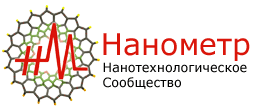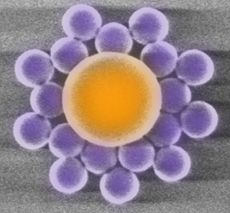5 лет назад вышел первый номер журнала Nature Chemical Biology.
Юбилейная подборка статей (выбор редакции):
Our premiere paper (FREE)
Das, S.R. & Piccirilli, J.A. Nat. Chem. Biol. 1, 45–52 (2005)
The first paper published in Nature Chemical Biology illustrated how chemistry informs enzymology. Using chemically modified RNAs as probes of ribozyme mechanisms, Das and Piccirilli showed that that cytosine 76 is a general acid catalyst of phosphodiester hydrolysis in the hepatitis delta virus ribozyme.
Best decryption
Gama, C.I. et al. Nat. Chem. Biol. 2, 467–473 (2006)
Biological polysaccharides display a huge range of structural diversity. Hsieh-Wilson and colleagues provided compelling evidence that this diversity is not random in their demonstration that specifically sulfated glycosaminoglycan substrates are differentially recognized by growth factors and in neuronal function.
Sweetest metal interaction
Xue, Y. et al. Nat. Chem. Biol. 4, 107–109 (2008)
Cation-π interactions play a well-established role in molecular recognition. O'Halloran and colleagues brought this interaction to the fore for the first time in bioinorganic chemistry, identifying a Cu(I)-tryptophan interaction involved in metal recognition in a copper-trafficking protein.
Most mysterious
Bok, J.W. et al. Nat. Chem. Biol. 5, 462–464 (2009)
Genomic sequencing has indicated that microorganisms have the capacity to produce many more natural products than are found in culture. Work by Keller and colleagues made strides toward identifying these cryptic metabolites by showing that changes in the epigenetic state of the fungus Aspergillus nidulans activated expression of normally silent gene clusters, resulting in production of new compounds.
Most buoyant
Lasserre, R. et al. Nat. Chem. Biol. 4, 538–547 (2008)
The past decade has seen much debate about the existence of specialized membrane domains, called rafts. He and colleagues demonstrated the existence of rafts in living cells beyond their operational definition of detergent resistance and identified their role in concentrating signaling components of the PI(3)K-Akt pathway.
Best adaptation
Rackham, O. & Chin, J.W. Nat. Chem. Biol. 1, 159–166 (2005)
Synthetic biology depends on modular components that are built from biological systems but adapted for new functions. Rackham and Chin constructed mRNA-ribosome pairs that are orthogonal to the wild-type translational machinery, providing an important new approach for engineering novel cellular networks alongside the natural cellular machinery.
Greenest chemistry
Runguphan, W. & O'Connor, S.E. Nat. Chem. Biol 5, 151–153 (2009)
The complex and undefined biosynthetic pathways found in higher organisms are often unapproachable with current metabolic engineering and mutasynthesis techniques. Here, Runguphan and O'Connor provided a landmark demonstration that feeding modified precursors to a mutant plant strain allows the direct generation of alkaloid diversity.
Most evolved
Brudno, Y., Birnbaum, M.E., Kleiner, R.E. & Liu, D.R. Nat. Chem. Biol. 6, 148–155 (2010)
In vitro evolution has led to nucleic acids and proteins with tailored functions but has been limited to naturally occurring macromolecules. Liu and colleagues successfully developed a genetically encoded selection system that paves the way for the evolution of functional peptide nucleic acids.
Most calibrated
Bennett, B.D. et al. Nat. Chem. Biol. 5, 593–599 (2009)
Metabolomics has become a central technique for chemical biologists, but it is typically focused on relative changes in metabolite pools. Careful analysis of Escherichia coli's metabolome allowed Rabinowitz and colleagues to provide quantitative information about a host of compound concentrations, yielding new insights into in vivo biochemistry.
Best revival
English, B.P. et al. Nat. Chem. Biol. 2, 87–94 (2006)
The Michaelis-Menten equation has served enzymologists well since 1913 in its description of enzyme kinetics as a function of substrate concentration. Xie and colleagues used single-molecule spectroscopy to show that the classic formalism that held true in ensemble measurements is also valid at the level of individual proteins.
Best traffic conditions
Gerlach, H. et al. Nat. Chem. Biol. 6, 46–53 (2010)
The HIV-1 protein Nef is required for viral pathogenicity and has a known role in altering host signaling and trafficking pathways. Geyer and colleagues investigated the membrane dependence of these functions, showing that they are mediated by and may promote membrane curvature for endocytosis of host proteins.
Quickest chemistry
Leibeling, M. et al. Nat. Chem. Biol. 6, 199–201 (2010)
Searching chemical space for bioactive compounds requires new synthetic methodology. In this paper, Werz and colleagues described the development of a highly efficient domino reaction that forms three bonds in four mechanistic steps by one Pd catalyst to create complex natural product scaffolds from carbohydrate precursors.
Most collaborative
Renner, S. et al. Nat. Chem. Biol. 5, 585–592 (2009)
Chemical biology research often involves multiple laboratories. With authors from five countries on three continents, a paper from Waldmann and colleagues—which reported a method for using bioactivities to guide exploration of chemical space—is perhaps our most collaborative paper published to date.
Largest mRNA buildup
Kotake, Y. et al. Nat. Chem. Biol. 3, 570–575 (2007)
Kaida, D. et al. Nat. Chem. Biol. 3, 576–583 (2007)
At the time of publication, there were few inhibitors of RNA-containing complexes beyond the ribosome. Mizui and coworkers and Yoshida and colleagues independently identified the spliceosome as the target of anticancer natural products, providing the first inhibitors of this molecular machine.
Least likely activator
Okuzumi, T. et al. Nat. Chem. Biol. 5, 484–493 (2009)
Although kinase inhibitors can have unanticipated effects on complex signaling pathways, these inhibitors have always been assumed to inhibit their intended target. Shokat and colleagues reported the surprising finding that an Akt inhibitor, just by binding in the ATP pocket, induces a conformational change in Akt that leads to its activation by upstream kinases.
Biggest drug bust
Feng, B.Y. et al. Nat. Chem. Biol. 4, 197–199 (2008)
When Shoichet and colleagues showed that known fibrillization inhibitors can form colloidal aggregates and—vice versa—that numerous known chemical aggregators inhibit fibrillization of a model amyloid protein, they challenged the current dogma that these inhibitors were acting in various neurodegenerative diseases via a discrete mechanism.
Most orthogonal
Carrico, I.S., Carlson, B.L. & Bertozzi, C.R. Nat. Chem. Biol. 3, 321–322 (2007)
Bioorthogonal reactions are defined by the selective alteration of one chemical group within the complex environment of the cell. Here, Bertozzi and colleagues identified a six-residue peptide motif amenable to the enzymatic introduction of reactive aldehydes in a genetically encodable strategy, poising protein targets for further modification at these unique sites.
Most ironed out
Netz, D.J.A. et al. Nat. Chem. Biol. 3, 278–286 (2007)
Very little was known at the time this paper was published about how Fe-S clusters are assembled and inserted into proteins in the cytosol. Lill and colleagues identified two proteins that together form a scaffold for cytosolic Fe-S clusters, providing the first molecular insights into this process.
Best beta-testing
Chen, S. et al. Nat. Chem. Biol. 5, 258–265 (2009)
Embryonic stem cells hold great promise for therapy of various diseases including diabetes, which affects pancreatic beta cells. Melton and colleagues made progress toward generating beta cells when they showed that a small molecule could transform definitive endoderm derived from embryonic stem cells into pancreatic progenitors.
Most positive
Yamanaka, K., Maruyama, C., Takagi, H. & Hamano, Y. Nat. Chem. Biol. 4, 766–772 (2008)
Many natural products exist as families of related compounds, but polylysine—a natural polydisperse homopolymer—takes this to the extreme. Hamano and colleagues explained this diversity in their report of an unprecedented membrane-bound nonribosomal peptide synthetase that singlehandedly generates the full spectrum of polylysine chains.
Jaz-iest composition
Fonseca, S. et al. Nat. Chem. Biol. 5, 344–350 (2009)
Jasmonates are a class of plant hormones that modulate development and response to pathogens. Careful structural and biochemical analysis by Solano and coworkers identified the bioactive jasmonate stereoisomer and highlighted a potential mechanism for jasmonate turnover in plants.
Deadliest
Degterev, A. et al. Nat. Chem. Biol. 1, 112–119 (2005)
Cell death is known to occur via several pathways. In this work, Yuan and colleagues identified a small molecule that provided definitive evidence for a new cell death pathway, necroptosis, that combines aspects of apoptotic signaling with necrosis morphology and is invoked during ischemic brain injury.
Largest library
Clark, M.A. et al. Nat. Chem. Biol. 5, 647–654 (2009)
High-throughput screens typically involve libraries in the range of thousands to hundreds of thousands of compounds. In this paper, Morgan and colleagues used a new DNA-encoded chemistry method to synthesize an 800-million-member small-molecule library that could be used for affinity selection against protein targets.
Most FlAsHy
Luedtke, N.W., Dexter, R.J., Fried, D.B. & Schepartz, A. Nat. Chem. Biol. 3, 779–784 (2007)
Selective chemical tagging strategies, particularly those related to imaging applications, are a hallmark of chemical biology. The “bipartite tetracysteine display” approach of Schepartz and colleagues provided a new way to evaluate protein conformation and protein-protein interactions in living cells

